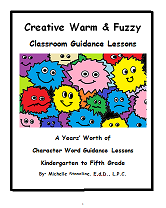The History Brain Research
The Lobotomy (Continued) and Electric Shock Therapy
Today, there are still some western countries that still permit the lobotomy surgery. However, its use has decreased worldwide. In 2001, there were fewer than 20 brain operations in the US per year (Boeree, 2001). These operations are not lobotomies.
Freeman’s legacy of the lobotomy has scared away researchers and funding for research. Up to 2001, the National Institute for Mental Health does not fund research for psychiatric surgery. It is important to note that
Freeman in his early years was not the monster he has been made out to be. He was acting in the best interest of his patients at the time.
Mental institutions were overcrowded in the 1950’s, and people stayed longer. Patients came to mental institutions for many mental health issues. They ranged from mild to severe.
Nowadays, psychiatrists can prescribe medication for patients. Also, mental institutional stays are shorter for those with many disabilities (Sabbatini, 1997).
Another discovery in 1938 was Electro-Convulsive therapy. Electric-Convulsive therapy or ECT involves applying an electric shock to the brain to create seizures in order to treat certain mental disorders. It was very popular in the 1940’s and the 1950’s. Its use decreased with pharmacological treatments in the 1960’s, but was re-introduced in the 1970’s. It has been regarded as a popular treatment ever since (Breggin, 1979).
In the year of 2000, in the U.S. an average of 50,000 people receive ECT each year. It is used mostly for depression, Bipolar disorder, acute mania and certain types of schizophrenia.
The patient receives typically between 140-170 volts of electric shock. Electrodes are attached to the brain, (single or double). A typical treatment schedule consists of 6-12 actual shocks over a period of 3 weeks. An anti-depressant is given after the treatment to prevent a possible relapse (Breggin, 1979).
Research has shown beneficial impact on depression and other mental illnesses. ECT results have greatly improved over the years. Six clinical trials were done in the 1970’s with patients who had severe depressive disorder. Half of the patients received ECT and the other half received dummy ECT treatments. The patients who received the real ECT treatments got better faster.
It is thought that ECT stimulates the long term production of neurotransmitters. This is similar to a long course of anti-depressants. The main advantages of ECT are that it is good for patients that have failed to respond to medication, or therapy.
It also produces faster positive effects compared to the more traditional therapies. It takes about
2-3 weeks rather than several months to get positive results (Goldman).
ECT’s greatest criticism is that there is no convincing scientific evidence of how it works. It is all based on theories. One of the theories is that ECT stimulates the long term production of neurotransmitters and acts similar to an anti-depressant drug. Another theory is that shock causes brain damage which can disrupt certain memory engrams,thus causing the patient to forget their problems temporarily (Breggin, 1979).
The side effects of ECT include retrograde amnesia, disorientation, sleep disturbances, confusion and the ability to form new memories. There are also claims that
ECT produces long term brain damage. Success rates show that ECT is an effective treatment for certain disorders. The success rates show a rate of 60 – 80%. However it is also reported that there is a 50% relapse rate within six months. It is suggested that anti-depressants need to be utilized as a follow up treatment for ECT or additional ECT treatments (Lambourn & Gill, 1979).
Again, we find a brain treatment that we do not understand how or why it works. It also has long term side effects. Memory loss is a major side effect . Although this treatment has been used for decades, it has significant side effects and a high relapse rate. ECT holds a negative view in the publics eye similar to the lobotomy (Lamburn & Gil,1979).
Human Brain Research History of Ancient Rome, Asia, & Middle Ages
Back to Page 1 of Human Brain Research History
Ancient Greece and Ancient Egypt Human Brain Research
The History of Early Brain Surgery in Brain Research
Disclaimer: This website and its content is intended for trained licensed mental health professionals and school certified mental health professionals to use for their clients / students at their own discretion.
*If you ignore the disclaimer above are using these techniques on yourself and you feel any discomfort or upset it is highly suggested that you seek out a licensed mental health professional immediately.
"Beyond Art Therapy" is the concept from Dr. Stangline that combines all creative fields in therapy. It is not the traditional "art therapy" but goes beyond to include sand tray therapy, play therapy, mindfulness, meditation, color therapy, cognitive behavioral therapy, and a vast majority of other therapies.
For any other type of mental health emergency call your local 911 / Police Number immediately.
Dr. Stangline does not offer advice / suggestions to anyone who is not a professional mental health provider, or a student who is studying this field and has questions about mental health programs of study.
See our Exciting Selection of eBooks:
Award Winning:
Creative Counseling 101 eBook
Our Best Seller!
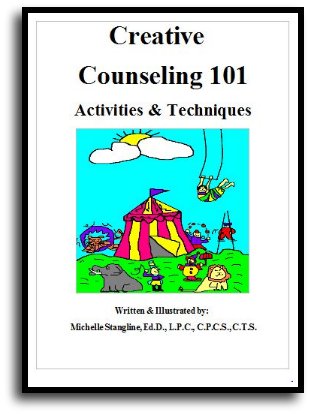
Step By Step Therapy:
Learn how to be a more Creative Therapist with the Book that started it all!
- Graduate School Counseling book used by hundreds of graduate counseling students!
- Includes full color reproducible worksheets with most activities.
- Winner of the Counselor Writer of the Year Award, 2011, Georgia Regional Award
Download Your Copy Today Only $39.95:
See Creative Counseling 101 eBook Information Here:
Get the Set
of all four
eBooks for only $98.95:
An incredible collection of how to do therapy eBooks!
A $159.80 Value,
You Save Over $60!
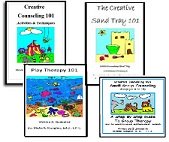
Get your complete set of the Creative Counseling 101.com eBooks by Dr. Michelle Stangline for only $98.95, that's less than $25.00 per eBook (Regular Price is $39.95 for each eBook.).
Your complete set includes:
- Creative Counseling 101
- Creative Group Counseling 101
- Creative Play Therapy 101
- Creative Sand Tray 101
For more information click the link below:
See Complete Set of eBooks For Sale Here:
New!!! "Beyond Art Therapy" 101 eBook
Over 300 pages of Beyond Art Therapy activities and techniques. Learn what I teach graduate counseling students!
See the link below for more information.
Only $39.95
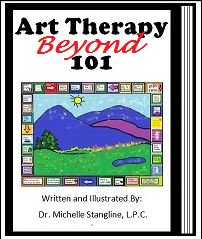
See More Invividual eBooks For Sale:
Sand Tray Therapy 101 eBook:
Learn how to do Sand Tray Therapy or enhance your skills.
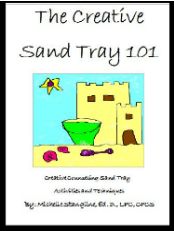
Play Therapy 101 eBook
Learn how to do play therapy or enhance your skills.
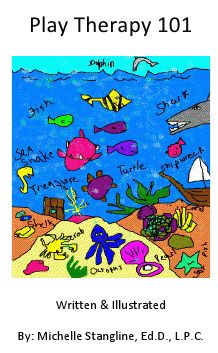
Small Group Counseling eBook For Sale:
Learn how to do creative group therapy and enhance your skills.
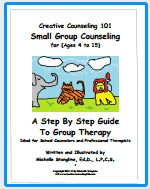
School Counselor Guidance Lesson & Social Stories eBook for sale:
Get a year's worth of school counselor guidance lessons with "Creative Warm & Fuzzy Classroom Guidance Lessons eBook". Introduce your students to the "Warm & Fuzzy Way". Click the link below for more information:
Warm & Fuzzy School Counselor Guidance Lessons eBook
